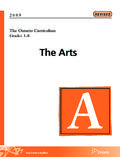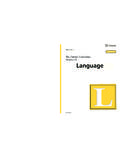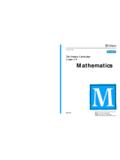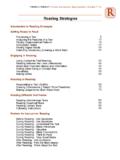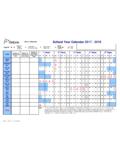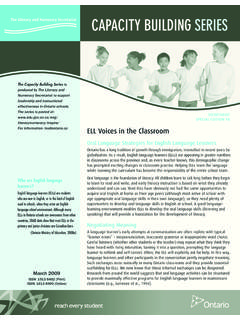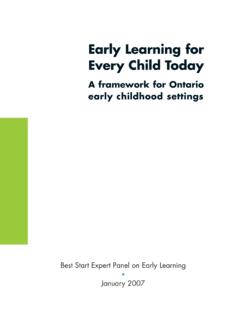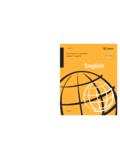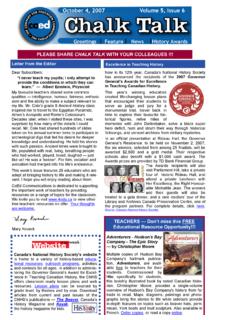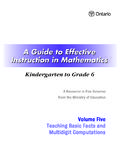Transcription of The Ontario Curriculum, Grades 9-12: English As a …
1 English as a Second Language andEnglish Literacy Development2007 Ministry of EducationThe Ontario CurriculumGrades 9 to 12 REVISED INTRODUCTION3 Secondary Schools for the Twenty-first Century ..3 The Importance of English as a Second Language (ESL) and English Literacy Development (ELD) in the curriculum ..3 The Goals of the ESL and ELD curriculum ..3 English Language Learners in Ontario ..5 Programs to Support English Language Learners ..6 Roles and Responsibilities in ESL and ELD Programs ..6 Factors in Successful English Language Acquisition ..9 THE PROGRAM IN English AS A SECOND LANGUAGE AND English LITERACY DEVELOPMENT12 Overview of the Program.
2 12 curriculum Expectations ..15 Strands ..16 Adapting ESL or ELD Courses for Students Who Speak a Variety of English ..21 Procedures for Placing English Language Learners ..22 Transition From Elementary to Secondary School ..26 Transition to Mainstream English Courses ..26 Integration of Students Into Mainstream Subject Classrooms ..27 Program Delivery ..28 ASSESSMENT AND EVALUATION OF STUDENT ACHIEVEMENT31 Basic Considerations ..31 The Achievement Chart for ESL and ELD ..33 Evaluation and Reporting of Student Achievement ..34 Reporting on Demonstrated Learning Skills ..35 CONTENTSThis publication is available on the Ministry of Education swebsite, at CONSIDERATIONS FOR PROGRAM PLANNING IN ESL AND ELD38 Instructional Approaches and Teaching Strategies.
3 38 Planning ESL and ELD Programs for Students With Special Education Needs ..48 Antidiscrimination Education in Programs for English Language Learners ..51 Literacy, Mathematical Literacy, and Inquiry/Research Skills ..52 The Role of the School Library in ESL and ELD Programs ..53 The Role of Technology in ESL and ELD Programs ..53 Career Education ..54 Cooperative Education ..54 The Ontario Skills Passport and Essential Skills ..55 Health and Safety in ESL and ELD ..56 COURSES57 English as a Second Language, ESL Level 1, Open (ESLAO) ..59 English as a Second Language, ESL Level 2, Open (ESLBO).
4 71 English as a Second Language, ESL Level 3, Open (ESLCO) ..83 English as a Second Language, ESL Level 4, Open (ESLDO) ..95 English as a Second Language, ESL Level 5, Open (ESLEO) ..107 English Literacy Development, ELD Level 1, Open (ELDAO) ..119 English Literacy Development, ELD Level 2, Open (ELDBO) ..131 English Literacy Development, ELD Level 3, Open (ELDCO) ..143 English Literacy Development, ELD Level 4, Open (ELDDO) ..153 English Literacy Development, ELD Level 5, Open (ELDEO) ..163 GLOSSARY175 INTRODUCTIONThis document replaces The Ontario curriculum , Grades 9 to 12: English as a Second Languageand English Literacy Development, 1999.
5 Beginning in September 2007, all courses in Englishas a Second Language (ESL) and English Literacy Development (ELD) for Grades 9 to 12will be based on the expectations outlined in this SCHOOLS FOR THE TWENTY-FIRST CENTURYThe goal of Ontario secondary schools is to support high-quality learning while givingindividual students the opportunity to choose programs that suit their skills and updated Ontario curriculum , in combination with a broader range of learningoptions outside traditional classroom instruction, will enable students to better customizetheir high school education and improve their prospects for success in school and in IMPORTANCE OF English AS A SECOND LANGUAGE (ESL)
6 AND English LITERACY DEVELOPMENT (ELD) IN THE CURRICULUMO ntario secondary schools are now home to students who speak more than 100 differentlanguages, including several Aboriginal languages, many African, Asian, and Europeanlanguages, or an English -related creole language (such as Caribbean Creole or WestAfrican Krio). Ontario s increasing linguistic and cultural diversity provides studentswith many opportunities for cultural enrichment and for learning that is global in the same time, however, this diversity means that a significant and growing proportionof Ontario students arrive in English -language schools as English language learners that is, students who are learning the language of instruction at the same time as theyare learning the curriculum .
7 The curriculum in English as a Second Language andEnglish Literacy Development for Grades 9 to 12 has been developed to ensure thatEnglish language learners have the maximum opportunity to become proficient inEnglish and achieve the high levels of literacy that are expected of all Ontario GOALS OF THE ESL AND ELD CURRICULUMThe ESL and ELD curriculum is based on the belief that broad proficiency in English isessential to students success in both their social and academic lives, and to their abilityto take their place in society as responsible and productive citizens. The curriculum isdesigned to provide English language learners with the knowledge and skills they need4 THE Ontario curriculum , Grades 9 12|ESL and ELDto achieve these goals.
8 Its aim is to help students become successful English languagelearners who can:use English to communicate effectively in a variety of social settings;use English to achieve academically in all subject areas;take charge of their own learning, independently and in groups;select and use effective learning strategies;integrate confidently into mainstream courses;use English effectively to advocate for themselves in all areas of their lives;make a successful transition to their chosen postsecondary destination (work,apprenticeship, college, university);function effectively in a society increasingly committed to the use of informationtechnology;use critical-literacy and critical-thinking skills to interpret the world around them;participate fully in the social, economic, political, and cultural life of their communities and of Canada.
9 This culminating vision of successful English language learners identifies the languageskills and capabilities required for success in Ontario s education system and for fullparticipation in Canadian society. The expectations outlined in the ESL and ELD curri-culum are designed to enable students to develop these important skills and many English language learners, achievement of the expectations may require themto adopt new ways of learning and new ways of interacting with others. However, growthtowards full linguistic and cultural competence in English should not be at the expenseof students own languages and cultures.
10 A major goal of any instructional program forEnglish language learners should be to encourage students to value and maintain theirown linguistic and cultural identities so that they can enter the larger society as bilingualand bicultural individuals. Such young people are able to choose language and culturalnorms that are appropriate in any given situation or cultural context, and can fully par-ticipate in and contribute to our multilingual, multicultural Canadian ESL and ELD curriculum expectations are designed to help English language learnersdevelop the skills they need to develop proficiency in everyday English and, most espe-cially, the proficiency in academic English that will allow them to integrate successfullyinto the mainstream school program.
